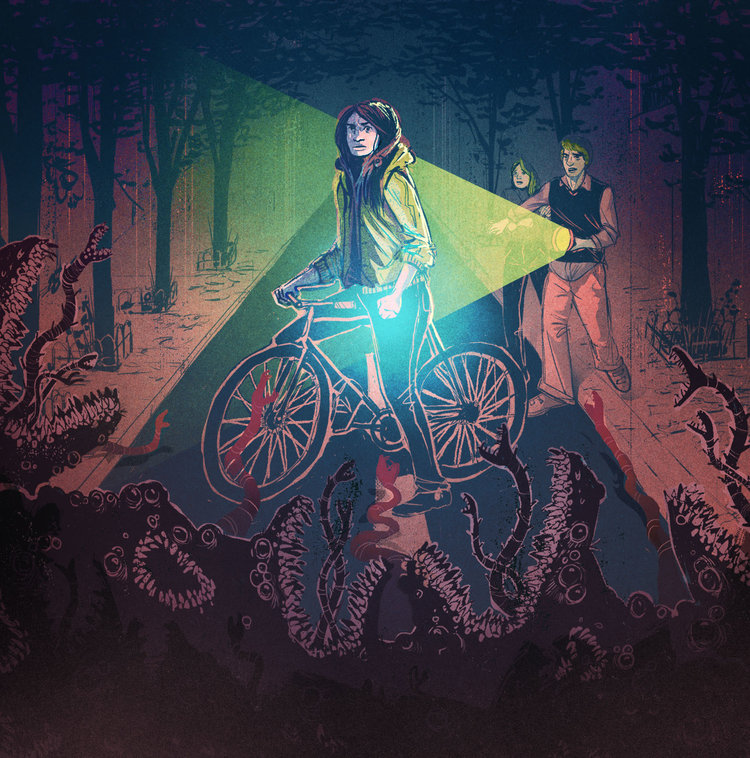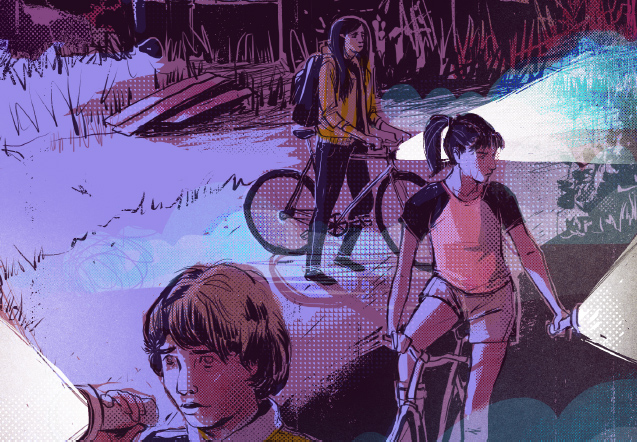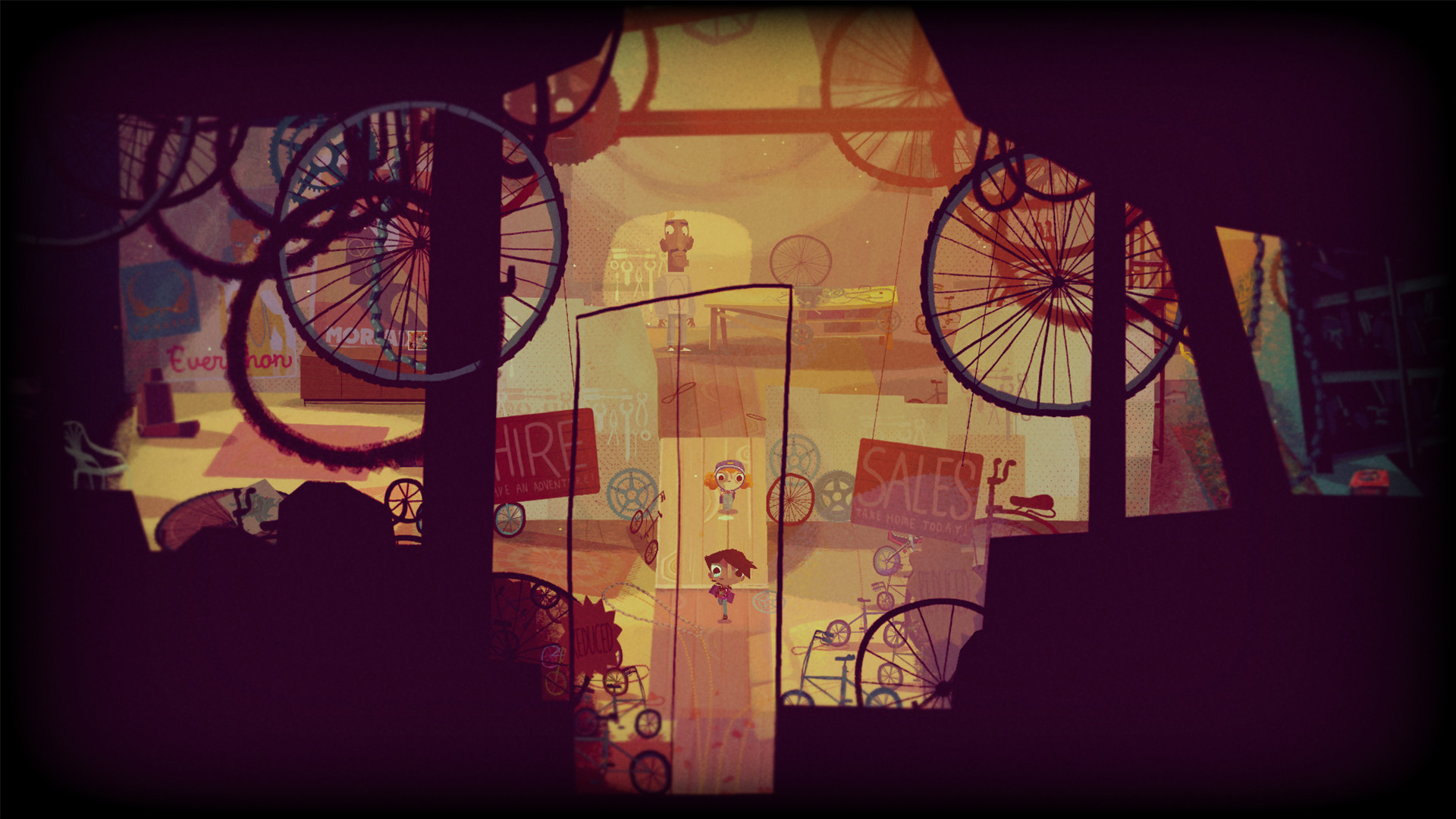In the early days of video games, when console manufacturers and developers alike imagined children as the primary audience for their digital creations, it was ubiquitous—arguably to the point of cliché—for gangs of scrappy kids to abandon their comfy beds and elementary school hijinks to save the world with the power of friendship. As the medium matured along with its players, however, these sort of pure-hearted antics became less common, replaced instead by the angsty anti-heroes that came to define the medium in the late ’90s and early ’00s—essentially the period that took us from the clinically dour Cloud Strife to the skull-crushing Kratos.
But as wave after wave of indie games have crashed upon the shores of Steam over the past decade, some developers have begun to mine the childhood nostalgia of aging gamers in increasingly clever ways. Though it’s easy for an indie platformer to fumble for your dusty memories by echoing the chunky chiptunes of your youth, or by throwing in a “subtle” reference to beloved cult classics from tabletop games to quirky platformers, some developers are weaponizing their own recollections in an attempt to reach back to what made those games and experiences so special. Whether you call it “kids on bikes,” “eightiescore”—or whatever other hashtag-ready genre slurry you want to cook up, like my preferred “Goonieswave”—there’s little doubt that this emerging aesthetic is growing more common by the year.

Credit: Renegade Game Studios
To be fair, this phenomenon isn’t confined to the realm of games, either. As co-creator of the hit tabletop game Kids on Bikes Doug Levandowski recalls, the genesis of their kid-adventures RPG was in an attempt to make a board game based on the TV show Stranger Things, perhaps the most popular example of this genre construction across all media. Though that project ended up flaming out due to intellectual property concerns, Levandowski and his development partner Jon Gilmour decided to work on a game that could conjure the nostalgic rush that the duo first experienced while watching the Netflix series for the first time.
Growing up as a child of the mid-’90s, I often felt that pop culture depictions of “nostalgia” were rooted in signifiers that I myself didn’t experience firsthand, from pagers to black-and-white TVs. (Soon, as Gen Z ages, even the idea of a world without cell phones will phase out of our universal cultural experience.) Kids on Bikes is a game powered by imagination that leans heavily on the (perhaps mythical) idea of a shared childhood experience in a pre-internet era. While the game shares a structure that was first pioneered by the famed fantasy RPGs that still dominate the pen-and-paper space, like Dungeons and Dragons, its focus is more on building and exploring a mysterious town sown with secrets with your friends rather than slaying ogres to collect treasure. The duo intentionally built the game with simplicity in mind to appeal to a wider audience, which is why the book weighs in at less than a hundred pages—a fraction of what you’ll find in D&D’s core rules. “Those books are great… but for a new player, they can be really, really daunting,” said Levandowski. “We wanted to make something that players and [gamemasters] could read quickly and jump right into.”

Credit: Renegade Game Studios
Levandowski and Gilmour are unapologetic devotees of ’80s pop culture, and it comes through in their work, which reads like a love letter to that decade’s greatest hits. Each player steps into the shoes of a mundane archetype ripped from the era—the brooding loner, the brainy nerd, the charismatic jock—and they collectively control an additional character who has latent powers, like an E.T.-esque magic alien, or Stranger Things’ telekinetic heroine Eleven. The duo note that their ’80s touchstones are rife with supernaturally gifted heroes, but they wanted to keep play grounded in their own lived experience, which resulted in that unique cooperative mechanic. (Using these powers are risky; a botched dice roll can leave the character out-of-action.)
“The fantasy when you’re a kid is having a sword, and being listened to, and having control over your own life,” Levandowski said. “We think for a lot of adults, it’s now about going back to a simpler time when they had less to worry about, freedom from the pressures of adulthood, all of that. Our thinking about nostalgia is that it’s no less a fantasy than being an elf who can shoot fireballs. You’re still recreating this world that never really existed… It just looks quite a bit like a world that did.”
While other creators in the space also draw inspiration from their own childhood experiences, some are more wary of the seductive lure of nostalgia, like Rex Crowle and Moo Yu, the two-person development team behind the cooperative exploration game Knights and Bikes. Though the game takes place in 1987, Yu said that the team tried to avoid “drenching everything in a specific ’80s nostalgia.” Instead, they tried to universalize their own experiences in such a way that it could appeal to the kids of today, while still evoking a generalized feeling of “the past.”
“We did our best to capture the feeling of being a child and growing up in a time with less technology, and more willingness to venture out and explore without popping up some huge brand name every 30 seconds,” Yu said.
Rather than leaning on a classic suburb as a setting, like many other works in the space, Knights and Bikes takes place on a fictional island in the U.K. that’s heavily based on the region of Cornwall, where Crowle hails from. Though it has a reputation as the home of ancient or legendary rulers such as King Arthur, in recent years Cornwall has, according to Crowle, come to rely on the tourism industry due to the decline of traditional manufacturing in industrialized countries like the U.K. The kitschy businesses that thrive in these hotbeds of tourism create a contrast between the craggy natural landscape and the ersatz or exaggerated versions that are crafted for the masses.
“These slightly tacky tourist attractions that cause a spark of inspiration and kids separate them from the adults who have become more tired and cynical of the old legends, and the more commercial packaging of them,” Crowle said.

Credit: Foam Sword, Double Fine
More than anything, works in this vein strive to rekindle a sense of childlike wonder that has long curdled to cynicism in many adults. True to its title, Knights and Bikes relies on its two protagonists’ bikes to supply that feeling; Yu described them as a metaphor for freedom itself, a sensation that many kids learn to savor over time, since it allows them to explore their neighborhood more fully than ever before.
Much of the game’s appeal comes from the game’s own lovingly-crafted environment, which boasts a level of detail that is charming and grisly in equal measure. When I playfully described the game’s artstyle as “un-cute,” Crowle said that he approved of that description. “The thinking behind the artstyle is to try and represent the world like it’s been seen through the eyes of the two player characters, Ness and Demelza,” he said. “The fun thing, for both storytelling and gameplay, is that we can take it further, and not just depict what’s actually there, but what things they are fully imagining. A rusty chain-link fence might warp into a castle’s battlements as they approach it, and a dragon belching out smoke might turn back into an old piece of farm machinery after they’ve vanquished it.”
Overall, though these games vary wildly in their individual aesthetics, they’re brought together by a singular commitment to portraying children as they actually are rather than how we want them to be. In Crowle’s view, games designed for a “family” audience typically offer flashy escapism and easy thrills without delving into the dark side of childhood, and the traumas that might lurk beneath. While we typically think of childhood as a time of idle fantasy, very few of us lived the cloistered ideal so often depicted in popular media, and that comes through in Knights and Bikes, where you can fathom the very-real issues threatening the protagonists through the veil of make-believe.
Crowle points to the seminal JRPG Earthbound as a major inspiration, and it’s not hard to see why. (Fans might recall how Ness’s father only communicates with him over the phone, or how sad his mother is at Ness’s absence throughout the game.) To Crowle, Earthbound epitomizes that “tinge of melancholy,” which is as much a staple of this aesthetic as tricked-out bikes and chewing gum. Whether the climactic danger that threatens our gang of heroes is a real paranormal threat or just a product of their overactive imaginations, the net result is the same: By rising up and vanquishing it, the children mature, and in the process step just a bit closer to the drudgery of adulthood.
In capturing that sense of what we adults have lost—or even building them ourselves in a tabletop game—these works help us understand the very real struggles of the children in our lives, however mundane they might be compared to a mind flayer haunting the Upside Down.
Header image: Knights and Bikes, credit Foam Sword, Double Fine

Steven T. Wright is a reporter and novelist living in the Twin Cities. He is the former independent games columnist for Variety, and he has written for Rolling Stone, Polygon, Vice, and many others. He almost named his novel after a city in Final Fantasy, but his friends talked him out of it.